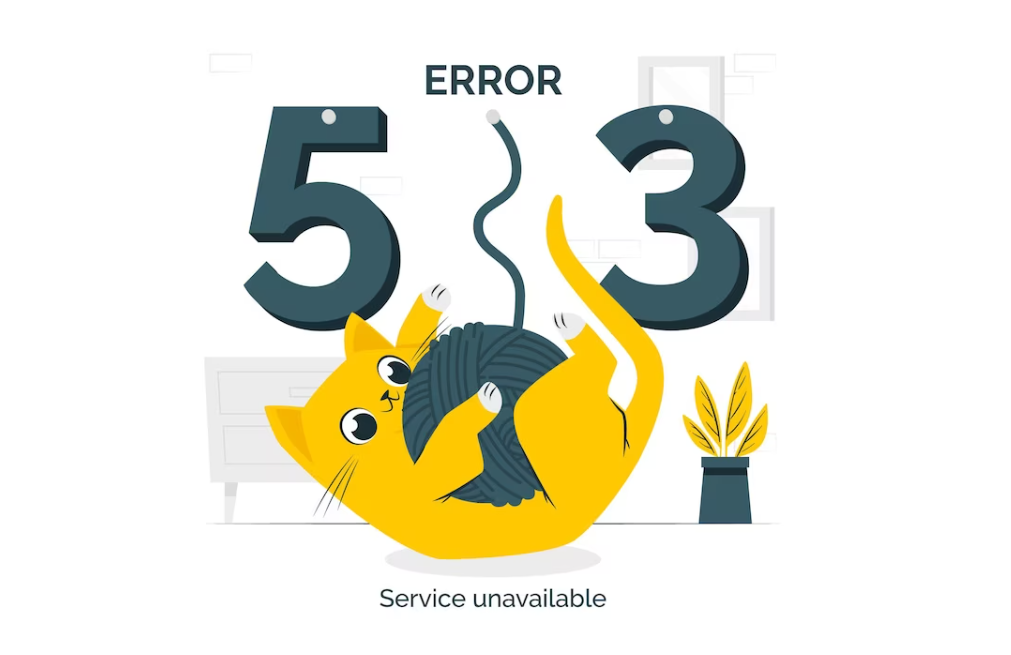If you’re a website owner, you’ve likely encountered the dreaded 503 Service Unavailable error at some point. This error can be frustrating for both you and your visitors, as it indicates that your web server is currently unable to handle the request. However, fear not! In this comprehensive guide, you’ll find everything you need to know to resolve the 503 error and get your website back up and running smoothly.
Understanding the 503 Error
The 503 error, also known as the “Service Unavailable” error, is one of the HTTP status codes that your website may display when things aren’t going as planned. When users or search engines encounter this error, it’s a clear message that your web server is temporarily unable to fulfill their request. It’s like your website’s way of saying, “Sorry, we’re currently undergoing some maintenance; please come back later.”
This status code can crop up for a variety of reasons, and understanding its nuances is crucial for any website owner. Here’s a deeper dive into what might be causing this digital hiccup:
- Server Overloads: One common trigger for the 503 error is a sudden surge in website traffic. Imagine your server as a busy highway, and each visitor as a car on that highway. When too many cars try to use the highway at once, traffic jams occur, and the system becomes overwhelmed. Similarly, when a flood of users tries to access your website simultaneously, your server’s capacity might be exceeded, leading to the 503 error;
- Scheduled Maintenance: Sometimes, website owners need to perform maintenance tasks like updates, security patches, or hardware upgrades. During such times, your website might be temporarily taken offline to ensure everything runs smoothly. To inform users and search engines about this, it’s good practice to display a maintenance page or use a temporary redirect (HTTP 302) that specifies when the site will be back up;
- Misconfigurations: Your server’s configuration is like the DNA of your website. A single misconfiguration can lead to the 503 error. It’s like a puzzle piece that doesn’t quite fit, causing the whole picture to be incomplete. Review your web server settings (e.g., Apache, Nginx) and DNS records meticulously. Correcting any misconfigurations you find is crucial in resolving the issue;
- Server Outages: Sometimes, the issue might not be on your end. Hosting providers can experience server outages due to various reasons, such as hardware failures or network issues. In such cases, the 503 error isn’t in your control, but contacting your hosting provider can help you determine if there are ongoing problems that need their attention.
Ignoring the 503 error is not an option, as it can have significant repercussions. Apart from frustrating your visitors, it can also harm your website’s SEO rankings. Search engines may interpret frequent 503 errors as a sign of an unreliable website, leading to a drop in your search engine rankings. Addressing this issue promptly is vital to maintain a seamless user experience and uphold your website’s online reputation.
Resolving the 503 Error and Optimizing Website’s Performance
Step 1: Check Your Server’s Resource Usage
The very first and crucial step in resolving the 503 error is to diagnose why your server is overwhelmed. Think of your website as a well-oiled machine, and your server as its engine. Just as an engine can sputter and stall if pushed beyond its limits, your server can become overwhelmed if it’s trying to handle more requests and processes than it can manage. This can lead to the frustrating 503 error.

Now, let’s delve deeper into what you need to do when you encounter this issue:
- Assess CPU Utilization: Your server’s Central Processing Unit (CPU) is like the brain of your website. It handles all the computations and processing. High CPU usage can be a clear indicator that your server is struggling to keep up with the demand. Server monitoring tools, readily available online, can provide real-time data on your CPU utilization. By analyzing this data, you can pinpoint periods of high usage and correlate them with 503 errors;
- Examine Memory Usage: Memory, also known as RAM (Random Access Memory), is essential for storing and accessing data quickly. If your server’s memory is consistently maxed out, it can slow down or even halt essential processes, resulting in the 503 error. Monitoring your server’s memory usage can help identify if this is a contributing factor;
- Check Disk Space: Your server’s storage capacity plays a vital role in its performance. When your disk space is nearly full, it can hinder the server’s ability to read and write data, leading to slowdowns and errors. Regularly check your disk space usage and ensure that there is sufficient space for your website’s data and logs;
- Consult Your Hosting Provider: If you’re unsure how to monitor these metrics or need expert insights, don’t hesitate to consult your hosting provider. They can offer guidance and may even provide tools or access to server analytics. Hosting providers often have extensive experience in dealing with server-related issues and can help you identify resource bottlenecks;
- Consider Upgrading Hosting Plans: If your resource usage is consistently high, it might be time to consider upgrading your hosting plan. A more robust hosting plan can provide additional CPU, memory, and storage resources to handle increased traffic and prevent 503 errors.
Step 2: Identify the Cause
To fix the 503 error, you need to identify its root cause. Here are some common culprits:
- Heavy Traffic: Sudden spikes in traffic can overwhelm your server. Consider using Content Delivery Networks (CDNs) to distribute the load and caching solutions to reduce server requests;
- Maintenance: If you’re performing server maintenance, inform users in advance and use a maintenance page or a temporary redirect (HTTP 302) to let them know when the site will be back online;
- Misconfigurations: Check your server configurations, including your web server (e.g., Apache, Nginx) settings and DNS records, for any errors. Correct any misconfigurations you find;
- Server Outages: Contact your hosting provider to ensure there are no server outages on their end. They can provide insights into any ongoing issues.
Step 3: Optimize Your Website
Improving your website’s performance can help prevent future 503 errors:
| Optimization Step | Description |
|---|---|
| Optimize Images and Files | Compress images and minify CSS and JavaScript files to reduce the load on your server. |
| Use a Content Delivery Network (CDN) | Implement a CDN to distribute content geographically, reducing the strain on your server and improving page load times. |
| Upgrade Hosting | Consider upgrading to a more robust hosting plan or a dedicated server if your site consistently experiences high traffic. |
| Implement Caching | Utilize caching mechanisms to store static content and reduce the number of server requests. |

Step 4: Monitor and Test
As a website owner, your responsibilities don’t end once you’ve resolved the 503 error and optimized your site. To ensure a consistently smooth and trouble-free user experience, it’s essential to embrace proactive measures by regularly monitoring and testing your website.
- Performance Monitoring: Websites are dynamic entities, and their performance can fluctuate due to various factors, such as changes in traffic patterns, updates to content, or server resource utilization. Implementing a robust performance monitoring strategy is crucial. Utilize tools that track metrics like page load times, server response times, and resource usage. Regularly review these metrics to spot any anomalies or trends that might indicate emerging issues;
- Automated Alerts: Setting up automated alerts can be a lifesaver. These alerts can notify you, often in real-time, about any abnormal behavior on your website. For example, if the server response time suddenly spikes or if your site experiences a surge in 503 errors, automated alerts can promptly bring these issues to your attention. This allows you to take immediate action and prevent potential disruptions;
- Uptime Monitoring: Ensuring your website is available to users 24/7 is paramount. Uptime Monitoring services are designed to check the availability of your website from various locations and report any downtime. By regularly testing your site’s availability, you can identify and address issues that might lead to 503 errors. Additionally, these services can provide historical data that helps you track your site’s uptime performance over time;
- Load Testing: As your website grows, it’s essential to simulate heavy traffic loads to evaluate its performance under stress. Load testing tools can help you identify potential bottlenecks and weaknesses in your infrastructure. By conducting periodic load tests, you can proactively address issues that might lead to server overload and 503 errors during traffic spikes;
- Content Updates and User Experience: Regularly review and update your website’s content, plugins, and themes to ensure they’re compatible with the latest web standards and security protocols. Additionally, pay close attention to user feedback and monitor user behavior to identify areas where improvements can enhance the overall user experience;
- Security Monitoring: Website security is paramount. Implement robust security monitoring solutions to detect and mitigate threats promptly. Cyberattacks and security breaches can lead to server overloads and downtime, resulting in 503 errors.
Conclusion
Resolving the 503 error is crucial for maintaining a seamless user experience and ensuring your website’s SEO rankings aren’t negatively impacted. By following the steps outlined in this comprehensive guide, you can identify the root cause, address the issue, optimize your website, and monitor its performance effectively. Don’t let 503 errors stand in the way of your website’s success – take action today and keep your online presence running smoothly.









